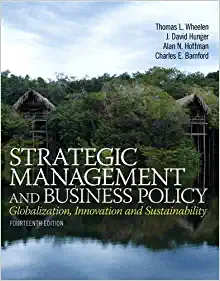Question
If there is no trade, which of the following is most likely? a. A country is better off because it will become self-sufficient. b. A
If there is no trade, which of the following is most likely?
a.
A country is better off because it will become self-sufficient.
b.
A country has more product variety available.
c.
A country can still benefit from international specialization.
d.
A country's production possibilities frontier is also its consumption possibilities frontier.
Which of the following best defines the nominal exchange rate?
a.
It is the number of goods a person can trade for a similar good in another country.
b.
It is the nominal interest rate in one country divided by the nominal interest rate in the other country.
c.
It is the price of a good in one country divided by the price of the same good in another.
d.
It is the rate at which a person can trade the currency of one country for the currency of another.
Which of the following would be Canadian foreign direct investment?
a.
A Swiss bank buys a Canadian government bond.
b.
Your Canadian-based mutual fund buys shares of stock in Eastern European companies.
c.
A Canadian citizen opens a guitar store in Hong Kong.
d.
A German tractor factory opens a plant in Victoria, British Colimbia.
What does net capital outflow measure?
a.
foreign assets held by domestic residents minus domestic assets held by foreign residents
b.
the imbalance between the amount of foreign assets bought by domestic residents and the amount of domestic assets bought by foreigners
c.
domestic assets held by foreigners minus foreign assets held by domestic residents
d.
the imbalance between the amount of foreign assets bought by domestic residents and the amount of domestic goods and services sold to foreigners
If goods in Canada cost the same number of dollars as German goods cost in euros, the real exchange rate would be computed as how many German goods per Canadian goods?
a.
one
b.
the price of the Canadian goods
c.
the amount of Canadian currency that can be bought with one unit of German currency
d.
the amount of German currency that can be bought with one unit of Canadian currency
What did Adam Smith believe about trade?
a.
that people are better off if they specialize in what they can do best
b.
that trade with other countries was not necessary
c.
that trade should be based on comparative advantage
d.
that trade would hurt the British people
Which of the following do economists generally support?
a.
trade restrictions
b.
free international trade
c.
government management of trade
d.
export subsidies
What should a country do if it has a comparative advantage in a product?
a.
It should lower the costs of production until realizing an absolute advantage.
b.
It should keep the product for domestic use since it is relatively inexpensive to produce.
c.
It should export that product.
d.
It should import that product.
How are net exports of a country determined?
a.
the value of goods and services imported minus the value of goods and services exported
b.
the value of goods and services exported minus the value of goods and services imported
c.
the value of goods imported minus the value of goods exported
d.
the value of goods exported minus the value of goods imported
What does purchasing-power parity imply?
a.
that real incomes should be the same in all countries
b.
that the rent for an apartment should be the same everywhere
c.
that the nominal exchange rates should be equal to 1 for all currencies
d.
that the price of a standard hamburger should be the same everywhere
Assume that Greece has a comparative advantage in fish and Germany has a comparative advantage in cars. What will happen if these two countries specialize and trade according to their comparative advantage?
a.
Germany will produce more cars than in the absence of trade.
b.
Germany will produce more fish than in the absence of trade.
c.
All individuals in both countries will benefit.
d.
Greece will specialize in and export cars.
If the Canadian real exchange rate appreciates relative to the euro, which of the following best describes the consequences?
a.
Canadian exports to Europe rise, and European exports to Canada fall.
b.
Canadian exports to Europe and European exports to Canada both fall.
c.
Canadian exports to Europe and European exports to Canada both rise.
d.
Canadian exports to Europe fall, and European exports to Canada rise.
Which of the following is the most likely effect of an appreciation of the Canadian real exchange rate on the quantity of Alberta beef demanded by French citizens?
a.
The quantity of Alberta beef demanded by French citizens will not change because it is the French real interest rate that matters for French citizens.
b.
French citizens will buy less of Alberta beef.
c.
The quantity of Alberta beef demanded by French citizens will not change because the nominal exchange rate has not changed.
d.
French citizens will buy more of Alberta beef.
Step by Step Solution
There are 3 Steps involved in it
Step: 1

Get Instant Access to Expert-Tailored Solutions
See step-by-step solutions with expert insights and AI powered tools for academic success
Step: 2

Step: 3

Ace Your Homework with AI
Get the answers you need in no time with our AI-driven, step-by-step assistance
Get Started


